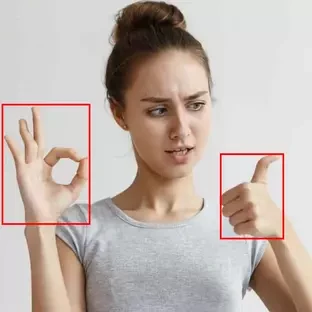Hand Gesture Recognition for Sign Language Translation
Home » Case Study » Hand Gesture Recognition for Sign Language Translation
Project Overview:
Objective
Therefore, we embarked on an ambitious project to develop a cutting-edge hand gesture recognition system that translates sign language. Consequently, this technology promises to bridge communication gaps, offering a new world of possibilities for seamless interaction through spoken or written languag.
Scope
Our project extended beyond mere technological development; in fact, it was a commitment to inclusivity and empowerment. We specifically focused on creating a robust system that can interpret various sign language gestures, catering to diverse sign language dialects and settings. Consequently, this initiative represented more than just a technological leap – it was a significant step towards building a more inclusive world.




Sources
- Academic Journals: Gleaning the latest research and breakthroughs in gesture recognition.
- Industry Insights: In addition to academic perspectives, we can draw practical knowledge from tech giants and accessibility advocates.



Data Collection Metrics
- Volume: We gathered an expansive dataset, encompassing over 1.5 million sign language gesture instances.
- Sampling Rate: Our data collection was fine-tuned to capture nuanced gesture dynamics, ensuring comprehensive coverage.
Annotation Process
Stages
- Planning: We set clear goals, identified the best data sources, and refined our methodologies.
- Data Collection: Subsequently, our teams worked tirelessly to gather high-quality data.
- Validation: Each data point underwent rigorous checks for accuracy.
- Cleaning: We diligently rectified any anomalies, ensuring data integrity.
- Analysis: Our experts then extracted valuable insights, shaping the project’s future.
Annotation Metrics
- Accuracy Rate: Achieving high correctness was paramount.
- Inter-annotator Agreement: We ensured consistency in data interpretation.
- Annotation Speed: Efficiency in annotation was key to our timeline.




Quality Assurance
Stages
Data Quality: We fine-tuned our system for minimal errors.
Privacy Protection: Additionally, we prioritized upholding data confidentiality, which underscores our commitment to privacy protection.
Data Security: Furthermore, we implemented robust security measures to protect data integrity, demonstrating our dedication to data security.
QA Metrics
- Defect Density: We maintained a low defect rate for superior software quality.
- Test Coverage: Our comprehensive testing ensured a reliable final product.
Conclusion
It enables the conversion of analogue handwriting into digital text, thereby supporting industries such as finance, healthcare, education, and government. This technology streamlines data entry, reduces errors, and enhances data analytics capabilities.

Quality Data Creation

Guaranteed TAT

ISO 9001:2015, ISO/IEC 27001:2013 Certified

HIPAA Compliance

GDPR Compliance

Compliance and Security
Let's Discuss your Data collection Requirement With Us
To get a detailed estimation of requirements please reach us.